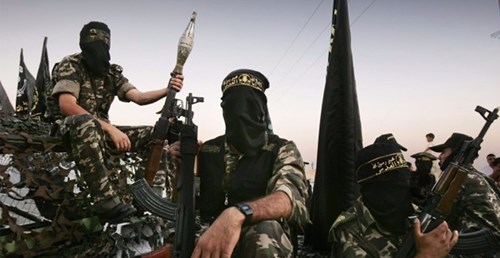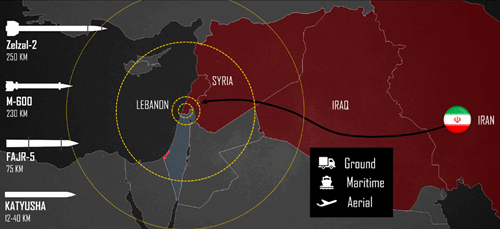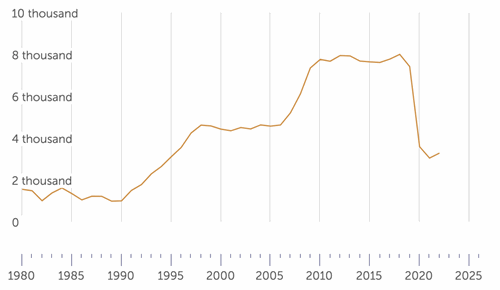Hezbollah: An In-Depth Examination Under Hassan Nasrallah's Leadership
Introduction: Hezbollah
In the complex geopolitical Middle East landscape, Hezbollah under Hassan Nasrallah's leadership has emerged as a powerful terrorist organization with incredibly powerful military forces, benefiting from strong support from Iran. The organization's military, political, and ideological activities, especially within Lebanon have significant implications for regional security, particularly concerning the tension with Israel.

Hezbollah Lebanon: Troop Strength and Sophisticated Armaments
Under the guidance of Hezbollah leader Hassan Nasrallah, the group boasts a troop strength of 20,000 to 25,000 full-time fighters, with additional tens of thousands in reserves. Hezbollah's elite Radwan Unit is particularly noted for its combat proficiency and strategic importance in conflicts across the region. This particular unit, which was established with assistance from Iran’s Quds force, is charged with incursions into Israel, planning for takeover of Israeli territories and communities. It includes several thousands operatives that are heavily trained, some of whom have operational experience from the Syrian civil war.
The armament capabilities of Hezbollah Lebanon are notable and more similar to that of a midsize country’s army. It boasts over 150,000 rockets and missiles, including the Iranian made Fajr-5 and Zelzal-2 rockets. These armaments underscore the threat that Hezbollah poses to Israeli security, as their arsenal is capable of reaching deep into Israel's territory. Hezbollah has built itself into the world’s most powerful non-state actor.
Hezbollah Weapons
- 400 Long-range rockets and Missiles (180-700 km)
- Precision guided missiles (70-250 km) Hundreds of
- 4,800 Middle-range rockets (40-180 km)
- 65,000 short range rockets (20-40 km)
- 140,000 mortars

Advanced Warfare Capabilities and Hezbollah Iran Connections
Hezbollah's military advancement is further exemplified by its access to anti-ship missiles, anti-tank missiles, and UAVs, largely imported from Iran. The use of anti-ship missiles in the 2006 conflict with Israel highlighted Hezbollah's ability to target naval assets effectively. The acquisition of advanced UAVs for surveillance and combat operations reflects Hezbollah's evolving military strategy and technological capabilities. Beyond its ability to target central and southern Israel (which, again, represents significant military capabilities in the hands of a recognized terrorist organization), it also includes capabilities like:
- 17 Air to surface missile systems
- Some 100 anti-ship missiles, with a range of 200 km
- Hundreds of UAVs, with ranges of some 400km
Hassan Nasrallah: Hezbollah's Inception and Evolution
Since its inception in 1982, Hezbollah has transitioned from a militia to a hybrid political-military entity. Under the leadership of Hassan Nasrallah, Hezbollah has gained political legitimacy within Lebanon while simultaneously engaging in activities that undermine regional stability.
Nasrallah joined Hezbollah quickly upon its founding in 1982. Ten years later he became leader of the terror organization, and worked to expand their rocket arsenal and range.
Nasrallah public statements have been marked by extreme anti-Semitism, including saying: "What do the Jews want? They want security and money. Throughout history the Jews have been Allah's most cowardly and avaricious creatures.”
Nasrallah has remained in hiding, presenting speeches from within a bunker.
Major Hezbollah Terror Attacks
Hezbollah has been responsible for a number of large scale terror attacks against Israeli and Western targets over the last forty years. These include:
- The 1983 Beirut barracks bombing, killing 241 US servicemen. 220 of the deaths were US Marines, the deadliest single day in the corps’ history since Iwo Jima
- The 1992 bombing of the Israeli embassy in Buenos Aires that killed 29 and wounded 242
- The 1994 bombing of the Buenos Aires Jewish cultural center, which killed 85 and injured over 300
Until 9/11, Hezbollah was responsible for more American deaths than any terror organization in the world.
As a result of these and other terror attacks, Hezbollah is recognized as a global terrorist organization by the United States, the United Kingdom, The Arab League, Canada, Argentina, Bahrain, Colombia, Germany, the Gulf Cooperation Council, Honduras, Israel, the Netherlands, Paraguay. While we do not believe that there is a difference, Australia, the European Union and New Zealand recognize the military wing of Hezbollah as a terrorist organization.
Like many terrorist organizations, beyond Iranian support, Hezbollah gets significant support from drug trafficking. This began in the early ‘90s and further expanded following the 2006 Lebanon war, which was started by Hezbollah and led to a deepening financial crisis in Lebanon. The DEA first targeted Hezbollah with Operation Titan, intercepting multi-ton cocaine shipments. Another notable case was a DEA case pursued against the Lebanese Canadian Bank .

Lebanon's Crisis and Hezbollah's Role
The economic collapse in Lebanon, with a sharp GDP contraction and hyperinflation, presents a precarious backdrop for Hezbollah's operations. Hezbollah has an outsized impact over the nation's stability, with the potential to either stabilize or further destabilize the already fragile country.

Israel Hezbollah War: A Case Study of Military Engagement
The background for the war began on October 7, 2000, Hezbollah attacked and abducted IDF Staff Sergeants Adi Avitan, Omer Soued and Binyamin Avraham. Between then and July 2000, Hezbollah continuously executed cross-border attacks, while using IEDs, rockets, and gunfire to kill and injure dozens of Israelis.
On July 12 2006, Hezbollah used rocket fire as a diversion for anti-tank missile attacks on an armored patrol in Israel, killing three and abducting two. The IDF immediately initiated a rescue operation, which escalated into the Second Lebanon. The Second Lebanon War in 2006 was the largest conflict between Israel and Hezbollah since Israeli forces left Lebanon in 2000. The war led to major destruction across southern Lebanon and the death of at least 600 Hezbollah fighters. Much like Hamas , Hezbollah exploited civilian shields and guerilla warfare, in direct contradiction of international law. Since the war ended, Hezbollah has worked to grow their missile arsenal, improve their military capabilities, and has become perhaps the best equipped terrorist organization in history.
Conclusion
The military capabilities of Hezbollah, reinforced by the strategic leadership of Hassan Nasrallah and the group's alliances with Iran, represent a considerable factor in Middle Eastern geopolitics. The organization's extensive missile inventory, sophisticated weaponry, and advanced technology position Hezbollah as a formidable entity in the Hezbollah Israel dynamic. As Lebanon contends with severe economic and political challenges, the strength and actions of terrorist Hezbollah, bent on attacking Israel and with heavy guidance from Iran, will undoubtedly be a major regional destabilizer with which the world must contend.



